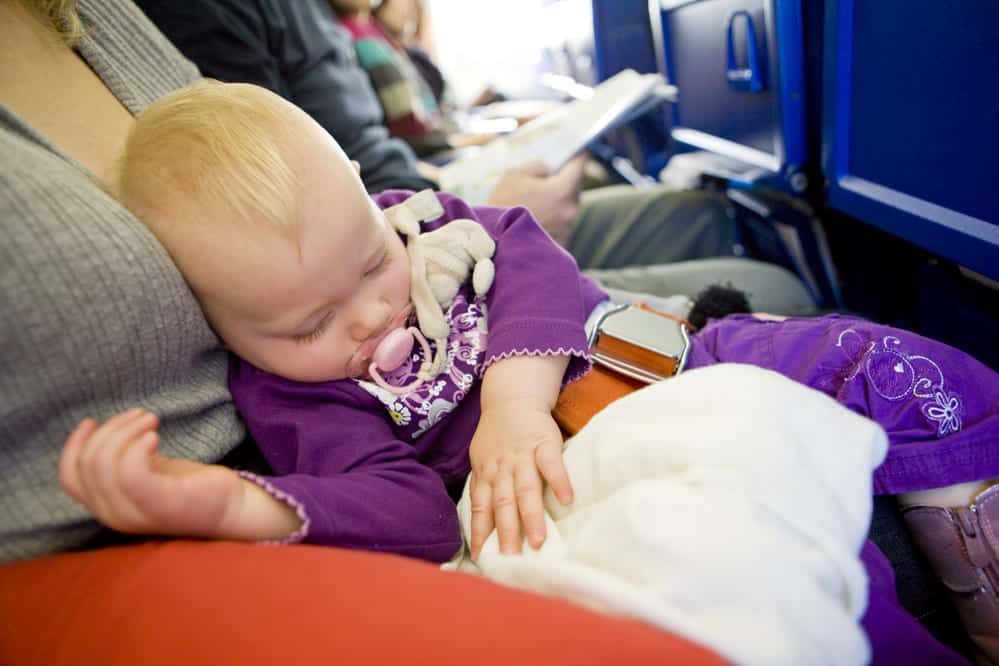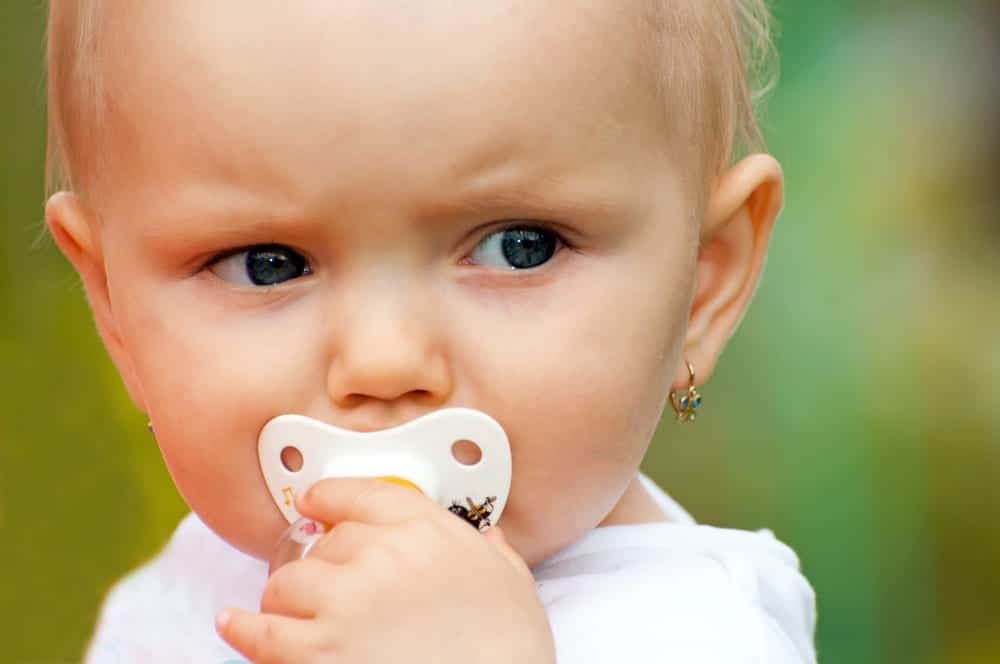Suck-swallow-breathe coordination is one of the most important skills to learn for a newborn. For most infants, the development of suckling reflex and skill is not a problem, but sometimes this skill might get compromised due to many extrinsic and intrinsic factors.
In such conditions, pacifiers provide therapeutic benefits to those infants. Pacifiers are a godsend tool for mothers who are worn out of countless hours of breastfeeding or those parents who are tired of comforting their crying and fussy baby.
So, how many pacifiers do you actually need? Well, the answer is, you don’t need more than three pacifiers for your baby. Always carry a replacement pacifier with you, in case the one you are using falls somewhere and gets dirty. It is always handy to keep an extra pacifier in your baby’s diaper bag or in your car.
Sometimes, babies prefer a certain type of pacifiers and reject even slight variations in their favorite models, so, stalking up various pacifiers won’t help you in that case. Check Out my Favorite Pacifier on Amazon.
It is better to keep no more than three pacifiers at a time and check them frequently for replacement. Also, you will have to buy new pacifiers at different stages of your baby’s growth.
Do You Need Pacifiers?
According to the American Academy of Pediatricians (AAP), “Pacifiers do not cause any medical or psychological problems. If your baby wants to suck beyond what nursing or bottle-feeding provides, a pacifier will satisfy that need. However, a pacifier should not be used to replace or delay meals.”
While it may feel convenient to use a pacifier every now and then, it is best to let your baby decide when they actually want it.
In certain conditions, pacifiers also provide medical benefits to the infant, including reducing the risk of sudden infant death syndrome (SIDS). In the following situations, pacifiers support breastfeeding rather than interfering with it:
- In premature or underweight infants
- In infants struggling to develop sucking reflex
- In infants at risk of hypoglycemia
- Infants in NICU environments in need of calming, pain relief and decrease of stress.
Breastfeeding is an essential aspect of infant care and development. Suckling is an essential milestone to master for every infant to ensure exclusive breastfeeding or bottle feeding.
Suckling also contributes towards mother-infant bonding as well as self-regulatory behavior. However, introducing your baby to pacifiers earlier than two to four weeks may lead to nipple confusion.
If your child in on the formula from the beginning, then you can use pacifier anytime. Following are a few benefits of using pacifiers:
- It helps to soothe a baby.
- It may reduce the risk of sudden infant death syndrome (SIDS).
- It has many physiological benefits and it increases gastrin secretion to improve digestion.
- Infant’s self-consolation and self-soothing improve with the use of pacifiers.
- It also helps your baby to sleep.
How to Choose The Right Pacifier for Your Baby?
Look for the following points before buying a pacifier for your baby:
- Always choose one-piece pacifiers, as there is no risk of pacifier falling apart and becoming a choking hazard.
- Choose a pacifier that is appropriate for your child’s age. While smaller pacifier poses a risk of choking hazard, bigger pacifiers affect your child’s speech and teeth development.
- Choose a pacifier with orthodontic design, as it supports your child’s gums and teeth development.
- Silicone or natural rubber pacifiers are always better than plastic pacifiers. If you have a family history of allergy then a silicone pacifier is a better option. Silicone also maintains it shape and does not expands, while a natural rubber pacifier expands with use and needs to be replaced more often.
- Pacifiers should have a large shield, wider than the child’s mouth (just over 3 cm in diameter). Also, shields must have ventilation holes to permit air passage.
- It should have a symmetrical nipple shape.
- Avoid scented pacifiers.
Here are a few best pacifiers on the market that matches the above recommendations and are used by hospitals nationwide.
The First Years GumDrop Newborn: This is one of the best pacifiers for breastfed babies. It is a latex-free silicone pacifier that is designed in a way to stay away from your baby’s nose. These pacifiers for breastfed babies do not interfere with your baby’s breastfeeding and are meant for newborns to babies who are three months old.
Ryan and Rose Cutie Pacifier: It is a latex-free and 100% medical-grade silicone pacifier as well as a teething toy for babies.
Philips Avent Pacifier: It is one of the best pacifiers for babies with Downs syndrome because of their orthodontically correct design. This pacifier has a wider base and is made out of hospital-grade silicone.
Chicco PhysioForma 100% Soft Silicone One Piece Pacifier: It is a one piece-BPA and latex free-100% silicone pacifier. It has an orthodontic design that distributes the pressure uniformly across the palate and aids in the proper development of palate and teeth.
The UMMY: BPA-Free 100% Natural Rubber Pacifier: It is a 100% pure liquid-rubber pacifier. The flat shield of the Ummy pacifier allows free and unrestricted movement of lip and facial muscles.
How Long Should Pacifiers Be Used?
The American Academy of Pediatrics and the American Academy of Family Physicians recommend limiting or stopping pacifier use around 6 months to avoid an increased risk of ear infections.
It is safe to start to wean your child off the pacifier by the age of six months to one year and the habit should be discontinued before the age of four to avoid possible dental complications in your child.
You can start by reducing the number of times your child uses the pacifier to gradually limit its usage to stressful situations like starting the daycare or whenever your child needs calming.
Can Pacifiers Suppress Hunger?
The idea of pacifiers is to soothe your infant with ‘comfort suckling’ and hence, pacifiers should never be used to replace or delay meals. Parents need to differentiate between a hungry baby and a baby who needs comfort-suckling (a hungry baby will continue to cry when the pacifier is removed).
Do you Need To Sterilize Pacifiers Before Use?
Upon first use, you must sterilize the pacifier in boiling water to kill any germs off the pacifier. Till six months, babies are more susceptible to infections, after passing that age, your child will be more resistant to infections.
To be on the safer side, it will be beneficial to sterilize your child’s pacifier quite often if she is under 6 months of age, later you can just wash the pacifier with soap and hot water to avoid the accumulation of germs.
How Many Pacifier Holders Do I Need?
Pacifier holders or clips are extremely necessary, especially when you go out to make sure your baby’s favorite pacifier stays close to her and does not fall on the floor. Check out this Holder on Amazon.
It is helpful to keep a couple of pacifier holders or clips with you and you will never have to struggle with the issue of a lost pacifier. Not just that, a pacifier holder keeps the pacifier clean and germ-free and babies learn to get hold of their pacifiers themselves, as they need it.
Related Questions
What are the best practices of using a pacifier?
- To avoid infections, pacifiers should be cleaned or sterilized often and replaced regularly.
- Always use a pacifier that is suitable for your child’s age.
- Pacifiers shouldn’t be shared between siblings and never licked to clean them.
- Examine the pacifier thoroughly for any cracks or foreign object before giving it to your baby.
- Never tie a pacifier to your baby’s crib or around her neck or hand. Also, never let your baby sleep with the pacifier clip to avoid any strangulation accident.
- Bigger children should not be allowed to use pacifier while playing or moving around.
- Never dip the pacifier in honey or any other sweetened solution to avoid the risk of dental caries.
- Pacifiers should be used while putting infants to sleep and it should not be reinserted once the infant falls asleep.
Are there any risks associated with pacifier usage?
There are potential risks with pacifier usage for different age groups.
- There is a risk of breast weaning in older infants (older or up to six months of age).
- With prolonged use of pacifiers, there is a risk of ear infections in children (six months to two years)
- There is a risk of misalignment of teeth such as crossbite, open bite, etc with kids two years of age or older.
- Pacifiers are said to cause nipple confusion in younger infants.
- Pacifiers increases the risk of dental caries and intestinal parasitic infections.
- Overuse of pacifiers leads to dependency and parents of such babies have to struggle with constant temper-tantrums in case their child loses her favorite pacifier.

